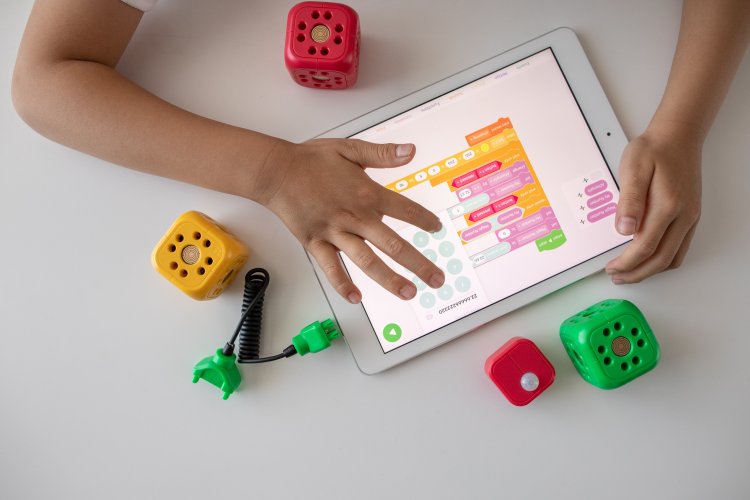Tips for Educators
6 Foolproof Ways To Create A Desire To Learn In Students
- Mar 1, 2022
- 0
- 4234

It would be pretty cool if learning could excite students as much as video games. Seems unrealistic? Not with the right approach. The traditional teaching method doesn’t exactly inspire the desire to learn from within. And the only solution is to rethink our approach.
Imagine this; a scenario where a teacher is reading from a book at length. What picture comes to your mind? Probably a droopy classroom that’s bored to death. Some students may be looking out of the window, while others pass notes and chat amongst themselves.
In this fast-paced digital era, it isn’t easy to spark the desire to learn in students. So, how do you do it? Well, instead of telling them to learn; you make them want to learn in the first place. Generally speaking, your teaching method will do this for you automatically.
Right about now, you’re probably thinking about how hard this all sounds. True, it’s not exactly a walk in the park. But if you combine new teaching methods with your expertise, you’ll be sparking the desire to learn in no time.
Coming back to the question, how do you inculcate a passion for knowledge in students? To get the ball rolling, make your subjects more engaging by incorporating easy learning techniques in your teaching approach. This will help address learning curves and bring out the best in your students. But, what are the other things that can help? No need to rack your brain. We bring to you the only checklist you need to stir up learning interest in the minds of the young and bright! Here are six recipes to stir up learning enthusiasm -
1. Encourage & Practise Open Communication
Maximising communication amongst your students may be a difficult but necessary component of teaching. Verbal teamwork can go a long way in developing a secure classroom environment where kids can ask questions, brush up their skills and feel like active participants. You should also try to learn the personal interests of your young learners to further establish two-way communication.
2. Inculcate a Reading Atmosphere
The first step to achieving this isn't rocket science - read a lot of books and tell your students to do it as well. Second, make them do the groundwork by reading shorter pieces of content (these are a lot less intimidating than long essays). Guided readings help encourage a reading habit in children too. Thirdly, you can also use virtual sites or open classroom reading methods depending upon the need.
3. Bring a Variety of Learning Methods to the Table
Teaching need not be boring and monotonous. You can always jazz it up with a wide array of innovative approaches. Experiment with new methods, go online and make the best use of digital creativity and virtual skills. Never fall into the trap of restricting yourself to the confinement of your classroom. The world is your stage. So, take your students out of the class for a little field trip once in a while, and promote an open learning environment.

4. Add Education-Based Games to Your Syllabus
Games are a sure-shot strategy to get your students’ attention. This is because they make learning fun. In your next class, hand out some puzzles or play pictionary - this will help stimulate the minds of your students.
Just think about it - a student will be much more willing to learn spellings for a Spelling Bee rather than simply being told to memorise them. It doesn’t matter if you’re introducing new concepts or revising old ones - education-based games can help you sow the seed of learning desire in any case.
5. Share Your Passion & Enthusiasm for Learning
Your passion, when combined with your expertise, is the powerhouse of a good class. The finest teachers understand that all learning is social and that everything they say and do becomes a lens through which their students view the subject they teach. Great teachers generate anticipation and promote reflection, both of which enhance the learning graph.
6. Focus On Strengths & Interests
All of your students might not be on the same page, and that’s completely okay. Every student is wired differently and has unique skills. As a tutor, it becomes your duty to understand and bring out the best in them. Try to learn more about your classroom and its occupants; find out what piques their curiosity. Brush up on your detective skills and help them make the most out of their strengths.
Good teachers recognize the need to engage students while they learn. Never lose sight of the fact that the purpose of teaching is to foster good and responsible adults of tomorrow. You must keep this mission in mind and channelise all your energy into making learning more interactive. This will undoubtedly spark the desire to learn in your students.
Add Comment
Related Blogs

Tips for Educators
2022 Edition - The Only Guide To Competency Based Learning You’ll Ever...
- James Coop...
- Apr 18, 2022
- 0
- 1796

Tips for Educators
Five Effective Ways to Build Entrepreneurship Skills in Students
- Mounika Sh...
- Sep 19, 2022
- 0
- 3621

Tips for Educators
Emirates Schools Establishment launches educational councils
- Nida Ashha...
- Nov 21, 2022
- 0
- 2084
Popular Blogs

Tips for Educators
3 Tips To Apply Classical Conditioning In Classrooms
- Natasha Di...
- Apr 25, 2022
- 0
- 21544

Understanding Concepts
4 Reasons Why Skill-Based Learning Is Important For Students
- James Coop...
- Mar 14, 2022
- 0
- 11020

For Parents
Everything You Need To Know About STEAM Education As A Parent
- James Coop...
- Mar 1, 2022
- 0
- 10825










